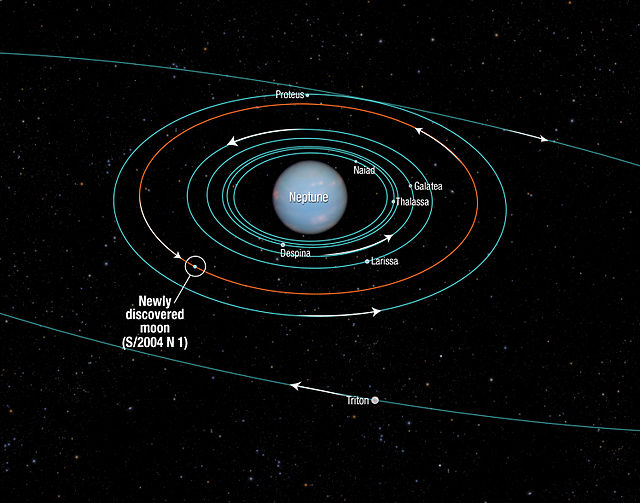Perdita is an inner satellite of Uranus. Perdita's discovery was very complicated, as the first photographs of Perdita were taken by the Voyager 2 spacecraft in 1986, but it was not recognized from the photographs for more than a decade. In 1999, the moon was noticed by Erich Karkoschka and reported. But because no further pictures could be taken to confirm its existence, it was officially demoted in 2001. However, in 2003, pictures taken by the Hubble Space Telescope managed to pick up an object where Perdita was supposed to be, finally confirming its existence.
Perdita (moon)
In astronomy, an inner moon or inner natural satellite is a natural satellite following a prograde, low-inclination orbit inwards of the large satellites of the parent planet. They are generally thought to have been formed in situ at the same time as the coalescence of the original planet. Neptune's moons are an exception, as they are likely reaggregates of the pieces of the original bodies, which were disrupted after the capture of the large moon Triton. Inner satellites are distinguished from other regular satellites by their proximity to the parent planet, their short orbital periods, their low mass, small size, and irregular shapes.
Jupiter's inner moons and rings
Diagram of Neptune's inner satellites.



